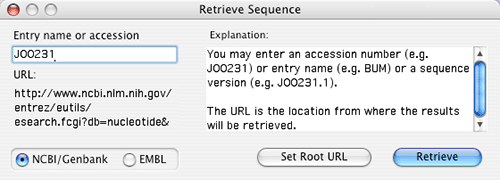

Phd - Output from PHRED, used by PHRAP and CONSED for input. It appears in the structure based on the atom coordinate section of the Pdb-atom - Uses Bio.PDB to determine the (partial) protein sequence as Pdb-seqres - Reads a Protein Data Bank (PDB) file to determine theĬomplete protein sequence as it appears in the header (no dependencies). Nibble (4 bits) to represent each nucleotide, and stores two nucleotides in Nib - UCSC’s nib file format for nucleotide sequences, which uses one Indented to allow for longer feature types. Imgt - An EMBL like format from IMGT where the feature tables are more Ig - The IntelliGenetics file format, apparently the same as the Gb - An alias for “genbank”, for consistency with NCBI Entrez Utilities Genbank - The GenBank or GenPept flat file format. Will produce FASTQ files using the standard Sanger encoding.

Note as of version 1.8 of the CASAVA pipeline Illumina Which encodes PHRED quality scores with an ASCII offset of 64 Sequence quality values (with an ASCII offset of 33).įastq-sanger - An alias for “fastq” for consistency with BioPerl and EMBOSSįastq-solexa - Original Solexa/Illumnia variant of the FASTQ format whichĮncodes Solexa quality scores (not PHRED quality scores) with anįastq-illumina - Solexa/Illumina 1.3 to 1.7 variant of the FASTQ format Uses Bio.GenBank internally.įasta - The generic sequence file format where each record starts withĪn identifer line starting with a “>” character, followed byįasta-2line - Stricter interpretation of the FASTA format using exactlyįastq - A “FASTA like” format used by Sanger which also stores PHRED

(mmCIF) file to determine the complete protein sequence as defined by theĮmbl - The EMBL flat file format. Sequence as it appears in the structure based on the atomic coordinates.Ĭif-seqres - Reads a macromolecular Crystallographic Information File ThisĮxample FASTQ file uses Unix style endings (b”n” only),Ībi - Applied Biosystem’s sequencing trace formatĪbi-trim - Same as “abi” but with quality trimming with Mott’s algorithmĪce - Reads the contig sequences from an ACE assembly file.Ĭif-atom - Uses to determine the (partial) protein Also note that under Python 3, the get_raw method will return aīytes string, hence the use of decode to turn it into a (unicode) string.Īlso note that the get_raw method will preserve the newline endings. Here the original file and what Biopython would output differ in the line CGGAGCCAGCGAGCATATGCTGCATGAGGACCTTTCTATCTTACATTATGGCTGGGAATC TTACTCTTTCATCTGATACCTTGTTCAGATTTCAAAATAGTTGTAGCCTTATCCTGGTTT TACAGATGTGAAACTTTCAAGAGATTTACTGACTTTCCTAGAATAGTTTCTCTACTGGAA ACCTGATGCTTTTATAAGCCATTGTGATTAGGATGACTGTTACAGGCTTAGCTTTGTGTG AAANCCAGTCACCTTTCTCCTAGGTAATGAGTAGTGCTGTTCATATTACTNTAAGTTCTA TAGCATACTTGCNATCCTTTANCCATGCTTATCATANGTACCATTTGAGGAATTGNTTTG CCCTTTTGGGTTTNTTNTTGGTAAANNNTTCCCGGGTGGGGGNGGTNNNGAAA > record_dict. CGGAGCCAGCGAGCATATGCTGCATGAGGACCTTTCTATCTTACATTATGGCTGGGAATCTTACTCTTTC ATCTGATACCTTGTTCAGATTTCAAAATAGTTGTAGCCTTATCCTGGTTTTACAGATGTGAAACTTTCAA GAGATTTACTGACTTTCCTAGAATAGTTTCTCTACTGGAAACCTGATGCTTTTATAAGCCATTGTGATTA GGATGACTGTTACAGGCTTAGCTTTGTGTGAAANCCAGTCACCTTTCTCCTAGGTAATGAGTAGTGCTGT TCATATTACTNTAAGTTCTATAGCATACTTGCNATCCTTTANCCATGCTTATCATANGTACCATTTGAGG AATTGNTTTGCCCTTTTGGGTTTNTTNTTGGTAAANNNTTCCCGGGTGGGGGNGGTNNNGAAA > print ( record_dict. index ( "Fasta/f002", "fasta" ) > len ( record_dict ) 3 > print ( record_dict. :: MORE INFORMATION Posted on 8 8 Categories DNA / Genome Analysis, Plasmid / Chemical Drawing Tags Analysis, DNA Cloning, Gene Construction Kit, Plasmid Mapping, Vector Manipulation Leave a comment on Gene Construction Kit 4.> from Bio import SeqIO > record_dict = SeqIO.
#Gene construction kit 2 file software#
The Gene Construction Kit software is available for both Windows and Macintosh users, and files can be shared across platforms allowing for easy collaboration. This DNA analysis software allows multiple files to be opened and displayed simultaneously, allowing DNA sequences to easily be copied and pasted between plasmids and vectors to represent real-world DNA cloning protocols. GCK eliminates tedious examination of DNA sequence data by automatically identifying open reading frames (ORF’s), keeping track of sticky ends during cutting and pasting of restriction enzyme digestion fragments, assisting with PCR primer design, and enabling comprehensive annotation of DNA sequence features. GCK allows easy manipulation of DNA sequences, either graphically or as sequence text – quickly saving users both time and money. The Gene Construction Kit®(GCK) program has been the preferred plasmid mapping software of leading researchers for more than 20 years.


 0 kommentar(er)
0 kommentar(er)
